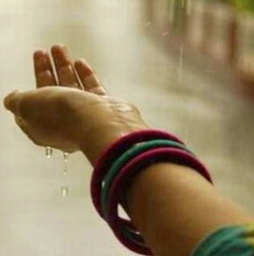Promise me the monsoon
by Sunita Narain
Why this weird weather? Why have western disturbances-the
extra-tropical storms that originate in the Mediterranean and Atlantic
seas-been lashing us again and again, with devastating impacts on
agriculture? Is this normal? Or has weird weather become the new
definition of normal?
 |
|
Pic source: aphn.org |
The India Meteorological Department says the severe and unseasonal
rain this year has been because of the confluence of western
disturbances with the easterlies from the Bay of Bengal, which is
normal. But what they cannot explain is why the frequency of the western
disturbances has increased and why the impact of this confluence is
being felt all the way up to central India which is unusual and
definitely not normal.
Indian scientists are extremely cautious about using the CC-climate
change-word. But it is now widely recognized that warming is making the
world's weather more unstable and extreme. How much is the question.
Scientists would agree on saying that although no single extreme
weather event could be attributed to climate change, the increased
frequency and intensity of such events is definitely because of
human-made climate change. Now, this science is becoming more exact.
Precipitation extremes
A recent paper published in Nature, Climate Change finds that the
observed average global warming of 0.85°C is responsible for 75 per cent
of the daily heat extremes and 18 per cent of the precipitation
extremes.
More worrying is the conclusion that as the temperature increases to
2°C-which is likely, given the lack of global effort in cutting
greenhouse gas emissions-40 per cent of the rainfall extremes will be
linked to human-made climate change.
This is when we know that the subcontinent's weather pattern and, in
particular, the monsoon is not only this country's real finance
minister, but truly the most globalised Indian, with connections from
all across the globe.
It is deeply connected to ocean currents and winds from the Pacific,
the Arctic and the neighbouring Tibetan Plateau. The monsoon is also the
most understudied and least understood of all weather phenomena.
Now climate change is making it even more difficult to read.
Many theories point to changes now discernible. R. Krishnan of the
Pune-based Indian Institute of Tropical Meteorology says, pronounced
warming over the Tibetan Plateau has increased the instability of
Westerlies.
This would explain the increased variability of western disturbances.
Another theory links these disturbances to the growing instability of
the jet stream-strong winds that blow from west to east and separate the
cold arctic mass from warm sub-tropical air. This is linked to the
warming of the Arctic.
What is most worrisome, indeed frightening, is the prospect that
climate change could have long-term impact on the monsoon.
We know that the monsoon-this huge movement of water from over the
oceans to the Indian landmass-happens because of the temperature
difference between the ocean and the land. The land is warmer and the
ocean cooler.
Suppressed warming
Now there is some research to show that this contrast could be
weakening. The Indian landmass is showing signs of suppressed warming-it
is not clear why-and the Indian Ocean is showing signs of enhanced
warming. If this continues then the land would not pull water-laden
winds from the oceans as strongly as before.
The Indian monsoon would be weaker. But this is also combined with
the fact that warming climate means that the atmosphere can hold more
moisture and this would mean more extreme rain. So, it is not clear if
it will rain less or more.
All this points to catastrophic changes in the future. One thing is
clear: we cannot continue to deny these long-term changes, which will
have potentially catastrophic impacts on our economy and agriculture.
It is because we refuse to accept (at least publicly) that anything
strange is afoot that we are not putting into place systems that would
improve our ability to cope with variable and extreme weather.
All this is also linked to the inconvenient fact that scientists who
study the weather or the monsoon are treated with contempt or neglect in
the establishment of science. Just think if you can even name a monsoon
scientist. Just think if government has ever recognized a monsoon
scientist. You will find that the answer is no. Instead what will spring
to your mind when you think of Indian science are the macho scientists
who have taken us to space or worked on nuclear science.
All this may be important but it is time we recognized that the icons
of today's science have to be different.
Those who make us see the future are those who will make us
understand the monsoon. This is what will determine our survival.
(Down to Earth)
|

